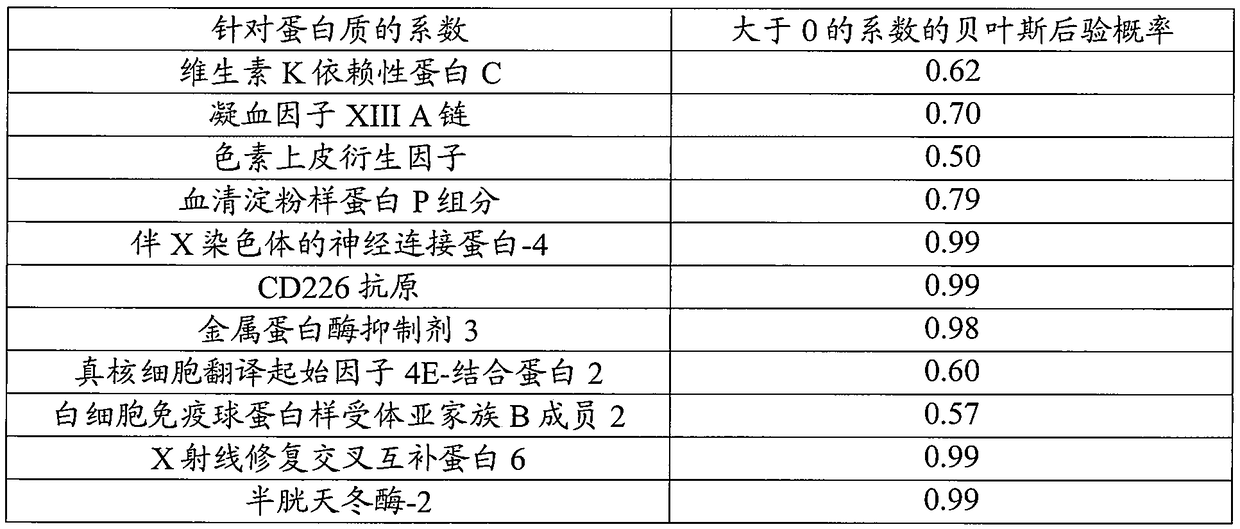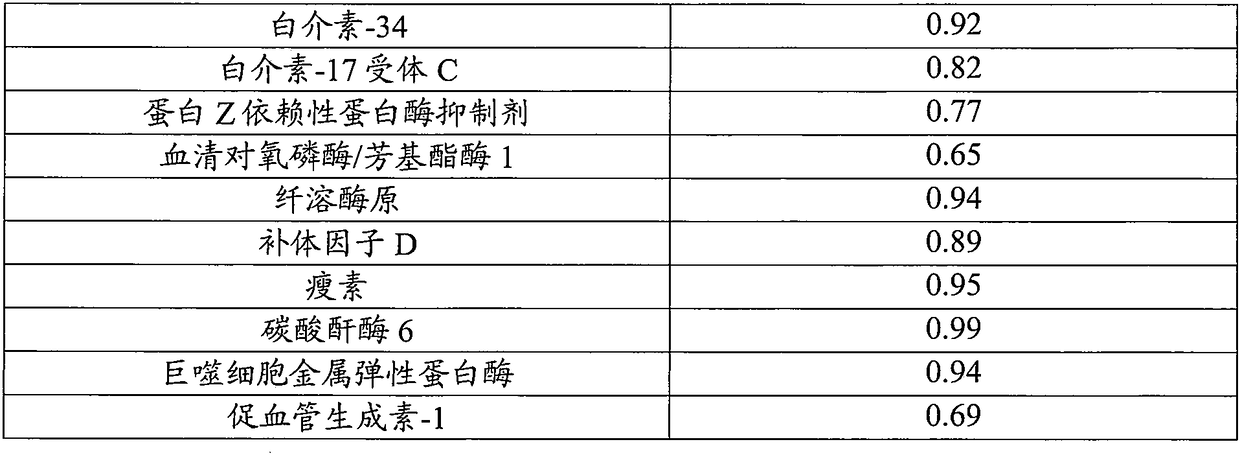Biomarkers for predicting degree of weight loss
A biomarker and weight loss technology, applied in biological testing, biomaterial analysis, measuring devices, etc., can solve the problems of no predictive value, unable to provide prediction or indication of weight loss degree, etc.
- Summary
- Abstract
- Description
- Claims
- Application Information
AI Technical Summary
Problems solved by technology
Method used
Image
Examples
Embodiment 1
[0274] Example 1 - Using Plasma Biomarkers to Predict Weight Loss Following a Low-Calorie Diet (LCD)
[0275] The Diogenes dataset was used to identify proteins that could predict the success of individuals with weight loss and meal replacement (800 kcal / day) at baseline on a low-calorie diet (LCD). This study is a pan-European, randomized and controlled dietary intervention study investigating the effect of dietary protein and glycemic index on weight loss and weight maintenance in obese and overweight households in more than eight European centers in approximately 500 individuals (Larsen et al., Obesity reviews (2009), 11, 76-91 (Larsen et al., Obesity Reviews, 2009, Vol. 11, pp. 76-91)).
[0276] Fasting plasma was collected from all participants immediately prior to compliance with the eight-week hypocaloric dietary intervention. The Diogenes dataset includes 1240 proteins identified using SomaLogic or LC-MS techniques. Each data set was analyzed individually to identi...
Embodiment 2
[0297] Example 2: Stratifying Individuals Based on Predicted Weight Loss and Success Thresholds
[0298] The term "obesity diet tolerance" proposed by Ghosh et al. Responding to" (ODR) is interpreted as "weight loss tolerance" because the individual is predicted to have a percent weight loss below a predetermined threshold. For example, "tolerance to weight loss" can be defined as predicted loss in bmi units less than the 30th or 15th percentile of expected bmi reduction (where bmi reduction = (bmi1-bmi2)*100% / bmil).
[0299] The term "obesity diet sensitive" (ODS) is interpreted as "weight loss sensitive" because an individual is predicted to have a percent weight loss above a predetermined threshold. For example, "weight loss sensitive" can be defined as a predicted decrease in bmi units greater than the 70th percentile or 85th percentile of the expected bmi decrease.
[0300] The expected mean median or other percentile of bmi reduction can be obtained by the skilled ...
PUM
 Login to View More
Login to View More Abstract
Description
Claims
Application Information
 Login to View More
Login to View More - R&D
- Intellectual Property
- Life Sciences
- Materials
- Tech Scout
- Unparalleled Data Quality
- Higher Quality Content
- 60% Fewer Hallucinations
Browse by: Latest US Patents, China's latest patents, Technical Efficacy Thesaurus, Application Domain, Technology Topic, Popular Technical Reports.
© 2025 PatSnap. All rights reserved.Legal|Privacy policy|Modern Slavery Act Transparency Statement|Sitemap|About US| Contact US: help@patsnap.com



